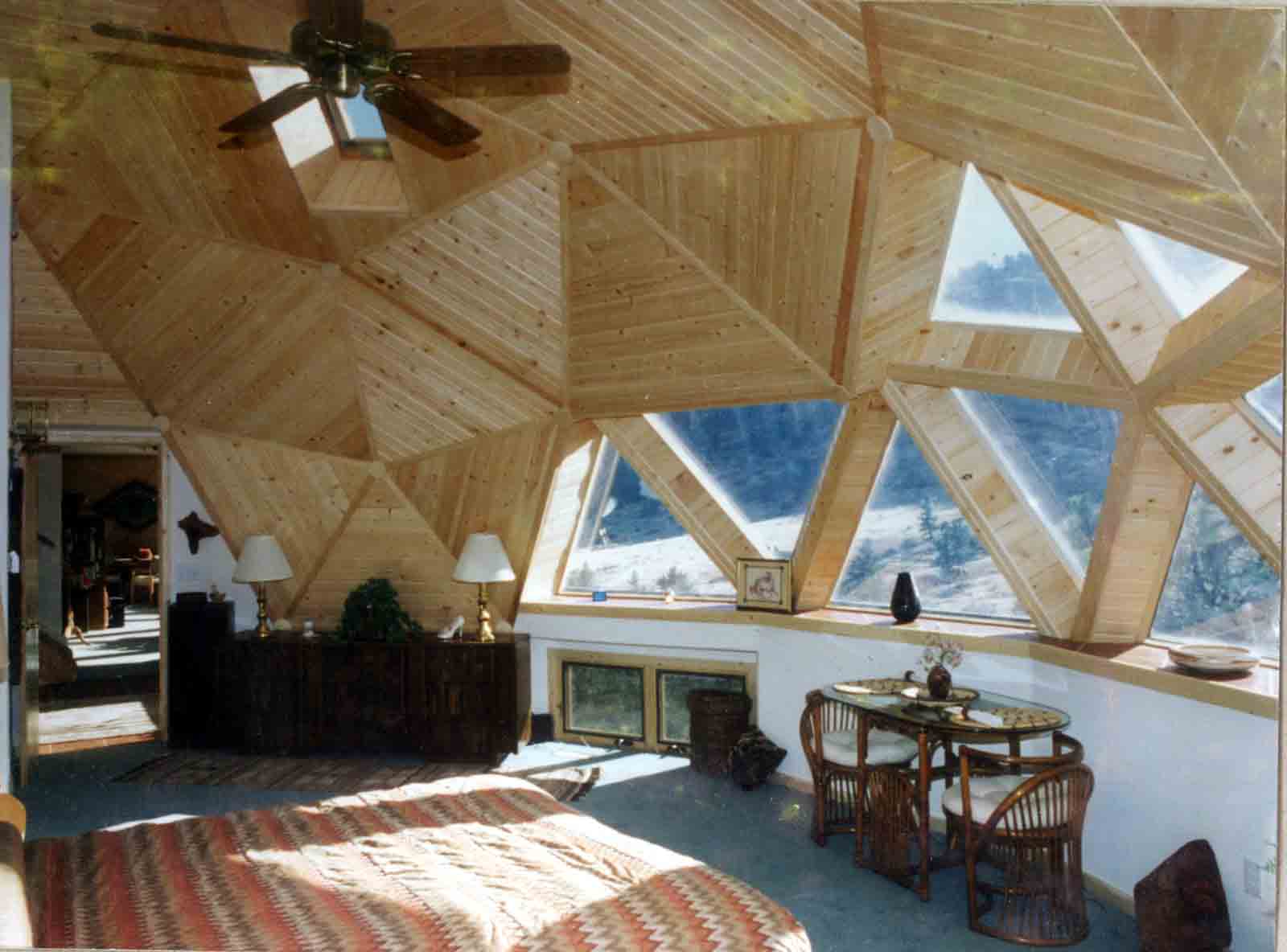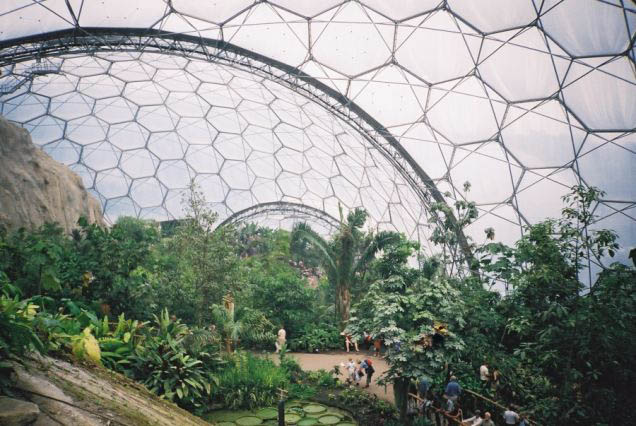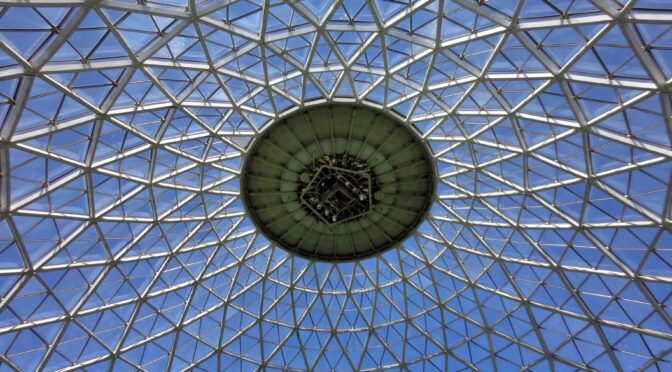Build the future with geodesic domes! This technology has been around for nearly 100 years. Geodesic domes utilize the power of natural geometry to make mind-blowing, incredibly efficient structures. Think of how the shell of an egg can hold its shape, and how a spider web can be very light and yet be strong enough to catch prey. This technology is a celebration of nature as opposed to an attempt to conquer it. For those more technical readers out there… A geodesic dome is a spherical or hemispherical thin-shell structure (lattice-shell) based on a network of geodesics (great circles) on the surface of a sphere or a hemisphere. The geodesics intersect to form triangular elements, which have local, triangular rigidity, and so distribute the structural stress throughout the geodesic sphere.

The first dome was designed and patented for a planetarium right after World War I. Twenty years later R. Buckminster Fuller gave the dome the name geodesic. Although Fuller was not the original inventor, he is credited with the U.S. popularization of the idea for which he received a U.S. patent. The geodesic dome appealed to Fuller because it was extremely strong for its weight, its “omnitriangulated” surface provided an inherently stable structure, and because a sphere encloses the greatest volume for the least surface area. Fuller hoped that the geodesic dome would help address the postwar housing crisis.
These homes are extremely energy efficient for many reasons. More specifically…
-
Its decreased surface area requires less building materials.
-
Exposure to cold in the winter and heat in the summer is decreased because, being spherical, there is the least surface area per unit of volume per structure.
-
The concave interior creates a natural airflow that allows the hot or cool air to flow evenly throughout the dome with the help of return air ducts.
-
Extreme wind turbulence is lessened because the winds that contribute to heat loss flow smoothly around the dome.
-
It acts like a type of giant down-pointing headlight reflector and reflects and concentrates interior heat. This helps prevent radiant heat loss.

The net annual energy savings for a dome owner is 30% less than normal rectilinear homes according to the Oregon Dome Co. This is quite an improvement and helps save the environment from wasted energy. Domes have been designed by Bucky and others to withstand high winds and extreme temperatures as seen in the Polar regions. Dome homes can be kind of weird looking and they don’t necessarily fit in all the beautiful square neighborhoods when you’re walking around the suburban world, but Fuller saw much potential in those triangles. Dome homes have become one of the most efficient building systems available. Not only are they energy-efficient and cheaper to build than a standard home but they are beautiful in appearance and and have endless design possibilities both interior and exterior.

In the future large urban areas could be domed under a single roof. The dome would be airtight and pressurized, creating a habitat that can be controlled for air temperature, composition and quality, typically due to an external atmosphere (or lack thereof) that may be harmful to habitation for one or more reasons. These cities may be situated on Earth, a moon or another planet. The world’s first climate controlled domed city is being built in Dubai.
Forest Sage & Alistair Jordan Hunt











 A wide range of metaphysical and radionics disciplines all work with the same energy, know it by various names (orgone, odic force, reiki energy, prana, chi, etheric energy, bio energy, bio magnetic energy. So far orgone matrix material has proven itself a to be a readily adaptable and highly functional conceptual approach for work in these areas.
A wide range of metaphysical and radionics disciplines all work with the same energy, know it by various names (orgone, odic force, reiki energy, prana, chi, etheric energy, bio energy, bio magnetic energy. So far orgone matrix material has proven itself a to be a readily adaptable and highly functional conceptual approach for work in these areas.